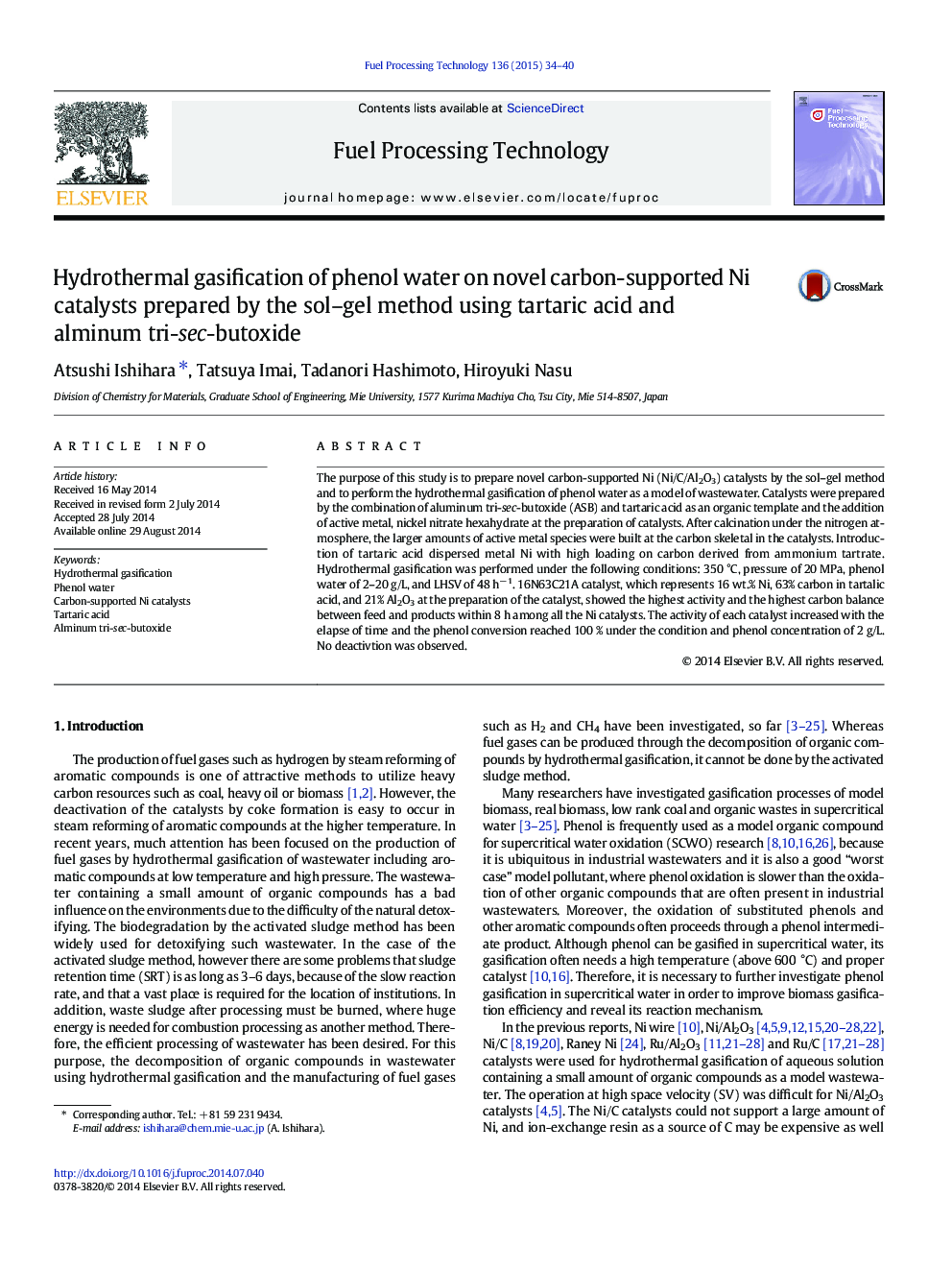| کد مقاله | کد نشریه | سال انتشار | مقاله انگلیسی | نسخه تمام متن |
|---|---|---|---|---|
| 209572 | 461674 | 2015 | 7 صفحه PDF | دانلود رایگان |
• Novel carbon-supported Ni catalysts were prepared using tartaric acid and ASB.
• Dispersed metal Ni was deposited with high loading on carbon derived from tartrate.
• Among Ni based catalysts, 16N63C21A showed the highest catalytic activity.
• No deactivation for all the Ni catalysts was observed at phenol conc. 2 g/L.
• Ni catalysts revealed higher activity than Ru catalysts at phenol conc. 20 g/L.
The purpose of this study is to prepare novel carbon-supported Ni (Ni/C/Al2O3) catalysts by the sol–gel method and to perform the hydrothermal gasification of phenol water as a model of wastewater. Catalysts were prepared by the combination of aluminum tri-sec-butoxide (ASB) and tartaric acid as an organic template and the addition of active metal, nickel nitrate hexahydrate at the preparation of catalysts. After calcination under the nitrogen atmosphere, the larger amounts of active metal species were built at the carbon skeletal in the catalysts. Introduction of tartaric acid dispersed metal Ni with high loading on carbon derived from ammonium tartrate. Hydrothermal gasification was performed under the following conditions: 350 °C, pressure of 20 MPa, phenol water of 2–20 g/L, and LHSV of 48 h−1. 16N63C21A catalyst, which represents 16 wt.% Ni, 63% carbon in tartalic acid, and 21% Al2O3 at the preparation of the catalyst, showed the highest activity and the highest carbon balance between feed and products within 8 h among all the Ni catalysts. The activity of each catalyst increased with the elapse of time and the phenol conversion reached 100 % under the condition and phenol concentration of 2 g/L. No deactivtion was observed.
Figure optionsDownload as PowerPoint slide
Journal: Fuel Processing Technology - Volume 136, August 2015, Pages 34–40
